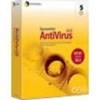Symantec 11281411 Administration Guide - Page 141
Setting options for scanning compressed files, Configuring HSM settings
 |
UPC - 037648327237
View all Symantec 11281411 manuals
Add to My Manuals
Save this manual to your list of manuals |
Page 141 highlights
Scanning for viruses and other threats 141 Configuring scan options Setting options for scanning compressed files Table 3-8 lists and describes the scanning options that are available for compressed files. Table 3-8 Options for scanning compressed files Operating Scanning option system Windows Symantec AntiVirus scans compressed files during manual, email, and scheduled scans. Because of the significant processing overhead, AutoProtect does not scan files that are within compressed files on Windows computers; however, the files are scanned as they are extracted from compressed files. NetWare Symantec AntiVirus scans compressed files during Auto-Protect and scheduled scans. In order to scan the contents of a compressed file, Symantec AntiVirus extracts each file, one file at a time, from the container and copies it to the SYS volume where it is scanned. The SYS volume must have enough space available on the volume to accommodate the largest file in the container. In the Scan Advanced Options dialog box, you can set options for scanning compressed files that are nested within compressed files. If you check Scan Inside Compressed Files, Symantec AntiVirus scans the container (such as Files.zip) and the contents of the container, which are the individual, compressed files. Symantec AntiVirus supports a maximum depth of ten levels of nested compressed files; NetWare servers are limited to eight levels. Note: You cannot stop a scan that is in progress on a compressed file. If you click Stop Scan, Symantec AntiVirus stops the scan only after it has finished scanning the compressed file. Configuring HSM settings Symantec AntiVirus includes settings that allow you to fine tune scans of files that are maintained by Hierarchical Storage Management (HSM) and offline backup systems. An HSM system migrates files to secondary storage such as CDROM, tape jukebox, SAN storage, and so on, but it may leave parts of the original file on the disk. Performance and disk space issues arise during scans if Symantec AntiVirus opens all of the stubs and the HSM system places the files back on the original disk. Consult your HSM or backup vendor to select the appropriate settings. The settings are dependent on how your HSM application operates.















